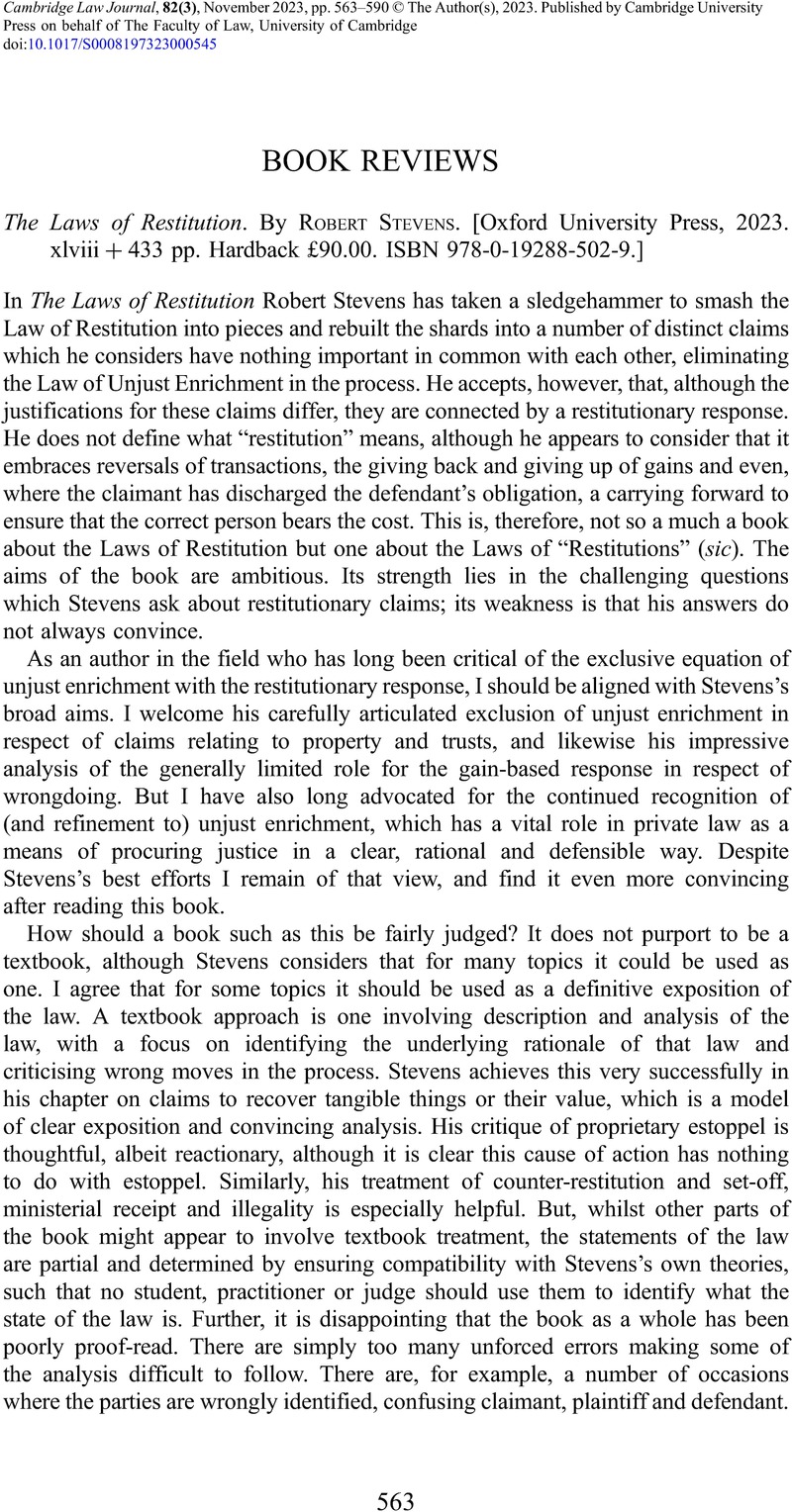No CrossRef data available.
Article contents
The Laws of Restitution. By Robert Stevens. [Oxford University Press, 2023. xlviii + 433 pp. Hardback £90.00. ISBN 978-0-19288-502-9.]
Review products
The Laws of Restitution. By Robert Stevens. [Oxford University Press, 2023. xlviii + 433 pp. Hardback £90.00. ISBN 978-0-19288-502-9.]
Published online by Cambridge University Press: 22 December 2023
Abstract
An abstract is not available for this content so a preview has been provided. Please use the Get access link above for information on how to access this content.

- Type
- Book Review
- Information
- Copyright
- © The Author(s), 2023. Published by Cambridge University Press on behalf of The Faculty of Law, University of Cambridge


